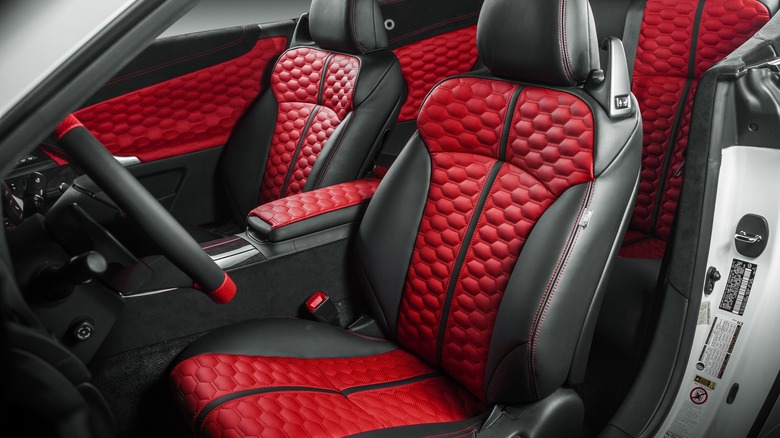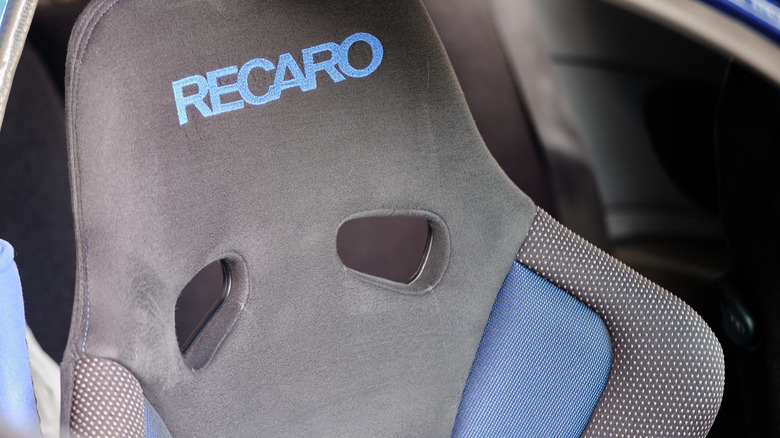What Is Alcantara Fabric In A Car And How Its Different From Suede?
For die-hard car enthusiasts, Alcantara represents the height of interior luxury. This high-end fabric can be found adorning seats and dashboards in everything from Bentley's and Lamborghini's, to Ford's and Toyota's. The iconic name, taken from the Arabic word "al qantara" (meaning "the bridge"), just drips with swagger. But what is it exactly, where does it come from, and how did it become so renowned?
Let's start by painting a picture of a region in Italy, called Umbria. This postcard-perfect setting consists of rolling picturesque hillsides, olive groves, cypress trees, vineyards, and lakes. Millennia's old Etruscan, Roman, and medieval towns dot the lush green countryside. And, "just a stone's throw" away is the ancient town of Terni, where this legendary Alcantara fabric comes from.
Don't let the exotic name or the romantic ages-old setting fool you, because the true origin of Alcantara is far less romantic and far more scientific. In 1970, chemist Miyoshi Okamoto was working for Toray Industries when he invented a synthetic microscopic ultra-fiber polymer so small that someone could theoretically stretch one pound of the stuff to the moon and back.
Not all Ultrasuede is Alcantara
From there, another Toray Industries scientist named Toyohiko Hikota devised a way to turn Okamoto's polymer into a non-woven microfiber fabric that felt like suede. Whereas suede is a natural product made using animal skin hide, this was wholly artificial.
The actual process involved taking the polymer and doing things that sounded like torture (extrude, iron, curl, cut, needle punch), injecting it with a binding agent, and washing it down with chemicals. Ultimately, you were left with what is commonly known as Ultrasuede.
Released as Ecsaine in some markets, it inadvertently became an immediate success in the fashion world. In 1972, the Eni Group (an Italian oil and petroleum company) partnered with Toray to manufacture and distribute this new product globally. The company formed from that venture was called Alcantara S.p.A.
The Ultrasuede material made at the Terni plant in Italy is called Alcantara (with a capital "A"). It is made using a propriety "recipe" that consists of a blend of approximately 68% polyester and 32% polyurethane. It's like saying all bourbons are whiskeys, but not all whiskeys are bourbons.
Much like "Google" has become the generic term for researching something on the internet (i.e., "Google it."), Kleenex is the word for all tissues or Jacuzzi for all hot tubs ... Alcantara has become the catchall name for Ultrasuede, despite being a very specific brand of the fabric.
Sit back and enjoy the synthetic suppleness
Alcantara Ultrasuede is super soft to the touch, has more grip than leather, isn't made by harming animals, and is lighter and more durable, and thus can last longer than natural suede. It's also sustainable and 100% carbon neutral. Because it's synthetic, it's available in an endless array of colors with far superior color retention as well.
Additionally, Alcantara won't bounce glare onto the windshield, and doesn't heat up under direct sunlight because it's completely flame retardant, making it ideal for race cars. While stain-resistant, it's still a delicate fabric that needs to be maintained. Otherwise, dirt and oil from your hands can make the texture flat and hard to the touch. Badly worn Alcantara is visually unappealing, which will put a dent in the overall swag factor of whatever car (high-end or not) its riding inside.
Ironically, Alcantara wasn't utilized in car interiors until Fiat placed it into a Bertone-bodied X1/9 in 1978. Audi used it in some of their automobiles not long after, with Lancia putting it into its high-end Thema executive cars in 1984. Within a decade, almost every automaker was using Alcantara instead of suede because it was cheaper to purchase and install than leather or suede.
While still considered a luxury fabric that's neither hide or cloth, consumers can buy genuine Alcantara online from the comfort of their own homes for as little $24.50 a square foot.

